Kia Optima DL3: Hydraulic System / SS-A Solenoid Valve (ON/OFF)
Specifications
Item
|
Specification
|
Control type
|
ON/OFF
|
Voltage (V)
|
9 - 16
|
Control pressure kpa (kgf/cm², psi)
|
0 - 490.33 (0 - 5.0, 0 - 71.12)
|
Coil resistance (Ω)
|
10.0 - 11.0
|
Description and operation
| • |
SS-A solenoid valve is ON/OFF type.
|
| • |
When TCM supplies variable current to solenoid valve, the solenoid valve
operates and controls the speed range.
|
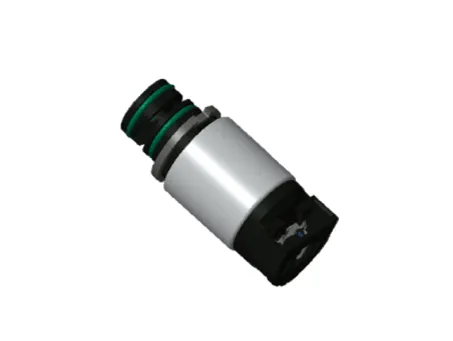
SS-A Solenoid Valve
operation table
|
SS-A
|
N, P
|
●
|
1
|
Δ
|
2
|
|
3
|
|
4
|
|
5
|
|
6
|
|
R
|
●
|
● : Connected status
Δ : Connected at vehicle speed above 8km/h
Components and components location
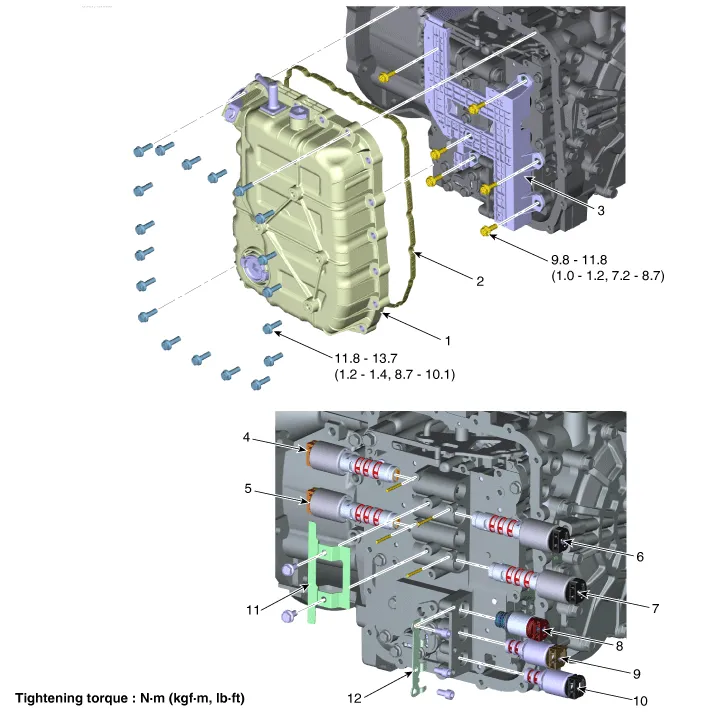
1. Valve Body Cover
|
8. SS-A ON/OFF Solenoid Valve
|
2. Valve Body Gasket
|
9. Torque Converter Control Solenoid
Valve
|
3. Main Harness
|
10. Line Pressure Control Solenoid
Valve
|
4. 26 Brake Control Solenoid
Valve
|
11. Support Bracket
|
5. 35R Clutch Control Solenoid
Valve
|
12. Support Bracket
|
6. Underdrive Brake Control Solenoid
Valve
|
|
7. Overdrive Clutch Control Solenoid
Valve
|
|
Repair procedures
| 1. |
The automatic transaxle system can be more quickly diagnosed for troubles
by using the vehicle diagnostic system (KDS). (Refer to "DTC guide")
KDS provides the following information.
| (1) |
Self diagnosis : Inspects and displays diagnostic trouble code
(DTC)
|
| (2) |
Sensor data : Checks the system input/output value status
|
| (3) |
Forced operation : Checks the system operating status
|
| (4) |
Additional function : Controls system options, zero point adjustment
and other functions
|
|
| 1. |
Switch "OFF" ignition.
|
| 2. |
Remove the air cleaner assembly.
(Refer to Engine Mechanical System - "Air cleaner")
|
| 3. |
Remove the battery and battery tray.
(Refer to Engine Electrical System - "Battery")
|
| 4. |
Disconnect the solenoid valve connector (A).
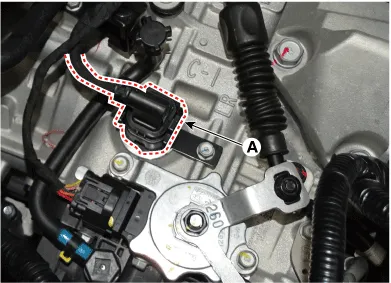
|
| 5. |
Measure the resistance between power terminal (10) and signal terminal
(18).
|
Specification : 10.0 - 11.0 Ω
|

|
| • |
Automatic transaxle is composed of delicate components. Be careful
not to cause any damage on the component in the course of assembly
and disassembly.
|
| • |
Maintain clean condition so that foreign substance does not get
into the automatic transaxle.
|
| • |
Use a coated apron, latex gloves, and stainless tray to prevent
foreign substance from getting into the transaxle.
|
|
| 1. |
Remove the under cover.
(Refer to Engine Mechanical System - "Engine Room Under Cover")
|
| 2. |
Remove the ATF drain plug (A), allow the fluid to drain out and then
reinstall the drain plug.
|
Tightening torque:
33.3 - 43.1 N·m (3.4 - 4.4 kgf·m, 24.6 - 31.8 lb·ft)
|
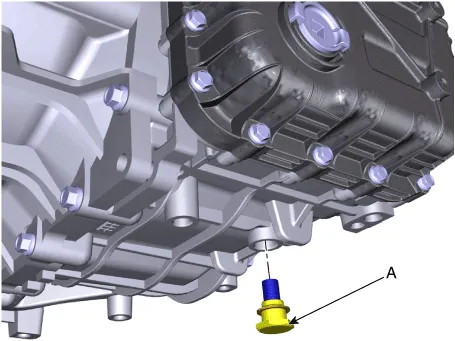
| •
|
The existing ATF drain plug gasket must be replaced with
a new one. (Do not reuse it.
|
| •
|
Automatic transaxle fluid (ATF) can be reused. Collect
it using a clean 10-liter beaker.
|
|
|
| 3. |
Remove the air duct and air cleaner assembly.
(Refer to Engine Mechanical System - "Air cleaner")
|
| 4. |
Remove the fixing clip (A) and the air breather hose (B).
|
Tightening torque:
9.8 - 11.8 N·m (1.0 - 1.2 kgf·m, 7.2 - 8.7 lb·ft)
|
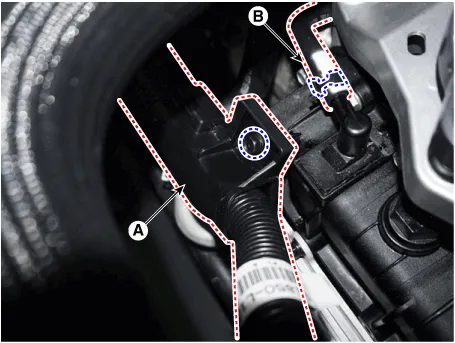
|
| 5. |
Separate the ATF cooler hose (A).
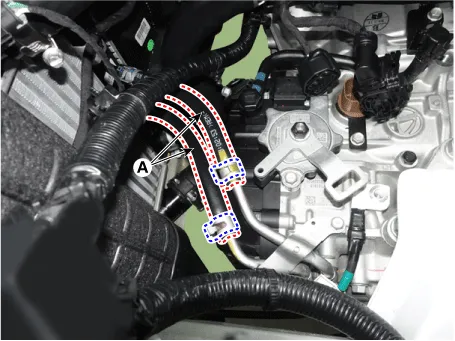
|
| 6. |
Lift the vehicle after loosening valve body cover upper bolts.
|
| 7. |
Remove the valve body cover (A) by loosening bolts.
|
Tightening torque:
11.8 - 13.7 N·m (1.2 - 1.4 kgf·m, 8.7 - 10.1 lb·ft)
|
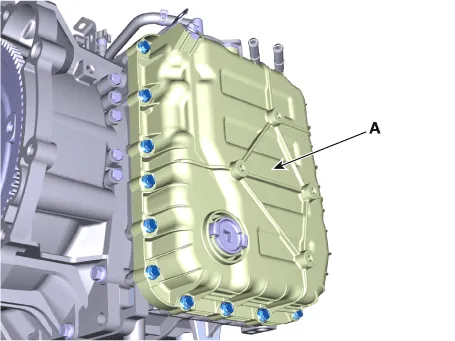
|
| 8. |
Remove the main harness (A) after removing the bolts.
|
Tightening torque:
9.8 - 11.8 N·m (1.0 - 1.2 kgf·m, 7.2 - 8.7 lb·ft)
|
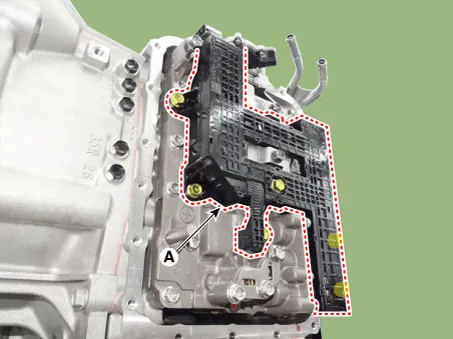
|
| 9. |
Remove solenoid valve support bracket (A) after loosening the bolts.
|
Tightening torque:
9.8 - 11.8 N·m (1.0 - 1.2 kgf·m, 7.2 - 8.7 lb·ft)
|
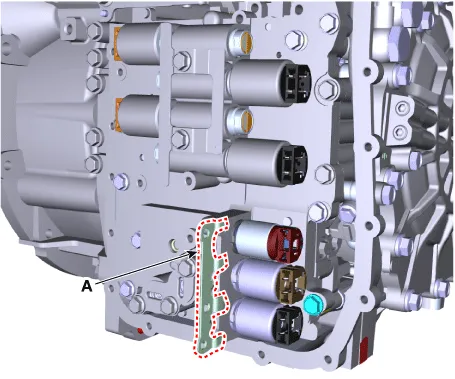
|
| 10. |
Remove the SS-A solenoid valve (A).
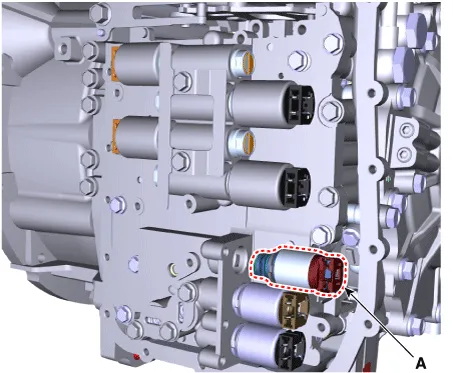
|
| 1. |
Install in the reverse order of removal.
| •
|
When installing, apply the ATF oil or petroleum jelly
to the O-rings (A) to prevent damage.
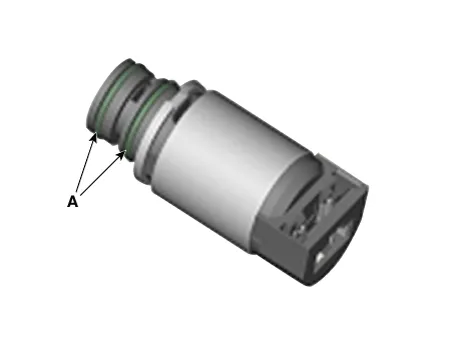
|
| •
|
The existing valve body cover gasket (A) must be replaced
with a new one. (Do not reuse it.)
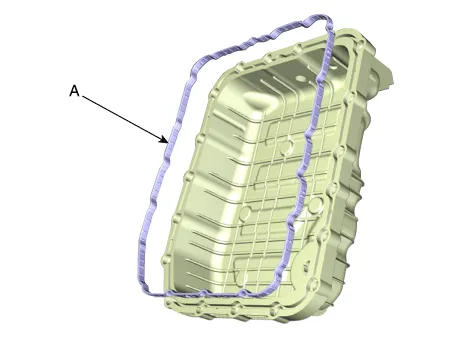
|
|
|
| 2. |
Perform the procedures below after installing.
| (1) |
Refill the automatic transaxle with fluid.
(Refer to Hydraulic System - "Fluid")
|
| (2) |
Clear the diagnostic trouble codes (DTC) using the KDS. Disconnecting
the battery negative terminal will not clear the DTCs. Clear DTCs
using the KDS at all times.
|
| (3) |
Check for leakage of coolant or fluid from hose connection during
engine start.
|
|
Specifications
Specification
Item
Specification
Control type
N/H (Normal High)
Control pressure (kpa (kgf/cm², psi))
0 - 519.
Tightening torque
Tightening Torque
Item
N·m
kgf·m
lb·ft
Front
Tire wheel hub nut
107.
Other information:
Service data
Service Data
Air Conditioner
ltem
Specification
Compressor
Type
6SAS14
Oil type & Capacity
ND-OIL 12 80 ± 10 cc (2.82 ± 0.
Description and operation
Description
The In-car air temperature sensor is built in the heater & A/C control unit.
The sensor contains a thermistor which measures the temperature of the inside.
The signal decided by the resistance value which changes in accordance with perceived
inside temperature, is delivered to heater co














